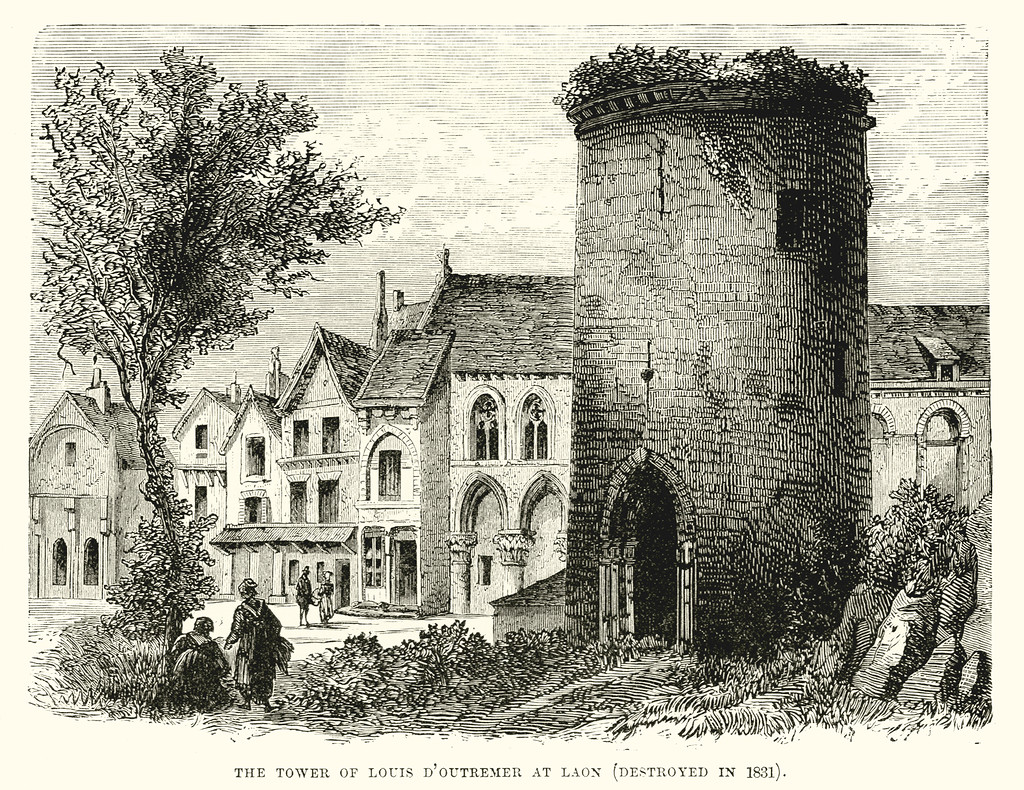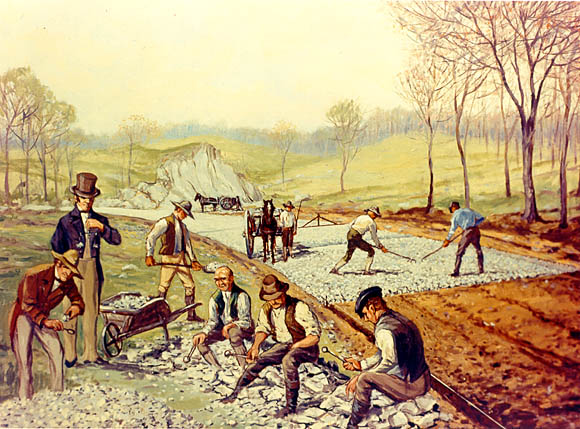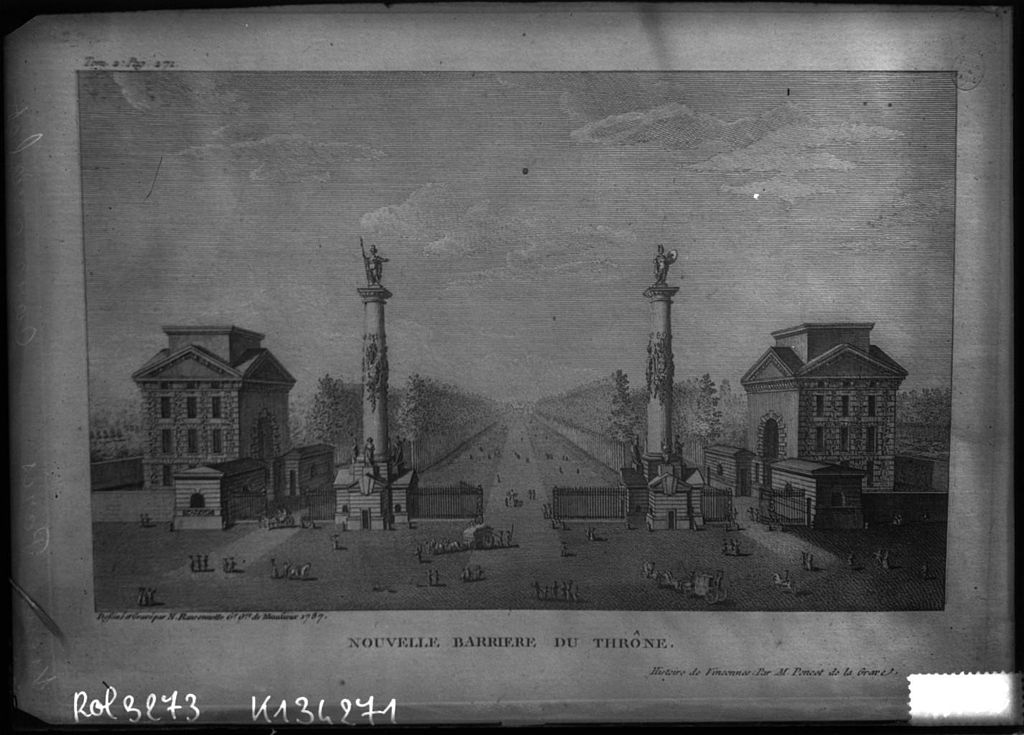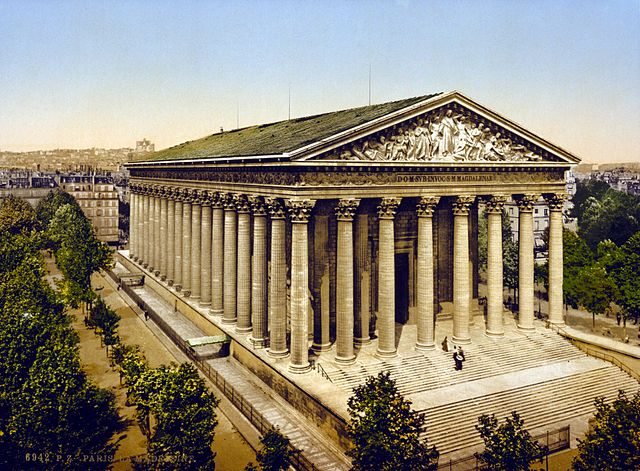Earlier this year I discovered an interesting piece written by Victor Hugo about the preservation of historical buildings in France called Guerre aux Démolisseurs written in 1832. Reading it in French, what I could understand of it, I was captivated by the intensity of his passion. It is a truly epic, sprawling rant, full of anger toward all the parties who for varied reasons were busy demolishing historical monuments or modifying them in ways that Hugo disapproved of. Like any great rant, it has a poetry to it, and a rhythm, it is a requiem and a battle cry.
I couldn’t find a translation and my limited understanding of French prevented me from enjoying it fully. So I decided to translate it myself. It is both an interesting snapshot of what was going on in France at the time, and has parallels today, since the debate over what to preserve and what to replace never stops. Apologies for any mistakes, corrections are welcome.
In the process of writing this I also stumbled upon a letter somewhat in the same vein entitled A Letter to the Lord Provost on the Best Ways of Spoiling the Beauty of Edinburgh by Lord Henry Cockburn, 1849. It seems that some of the same concerns present in France also existed elsewhere.
War on the Demolishers
Revue des Deux Mondes, Période Initiale, tome 5, 1832 (pp. 607-622).
|
A Note on the destruction of the monuments of France, written by the same as the lines you’re about to read, was recently published, by accident and with numerous typos, in one of the Year’s collections. Other collections and the most widespread papers have repeated this Note, unfortunately with all the typos which disfigured its meaning. In this survey, written in 1825, and otherwise very incomplete, of the numerous devastations of national buildings taking place all at once, and without a thought, over the entire area of France, the author promised himself to return often to this subject, both pertinently and impertinently. He comes today to fulfill this promise. It must be said and said loudly that this demolition of the old France, which we have denounced numerous times during the Restoration, continues with more ferocity and barbarity than ever. Since the July revolution, with democracy, a certain ignorance has been overabundant and a certain brutality as well. In many places, the local power, the municipal influence, the communal trusteeship has given gentlemen who can’t write to peasants who can’t read. They’ve gone down a notch. While waiting for these brave men to learn to spell, they govern. The administrative folly, the natural and normal product of this Marly machine that is called centralization, the administrative folly always increases today as in the past from the mayor to the sub-prefect, from the sub-prefect to the prefect, from the prefect to the minister; only it’s even worse. 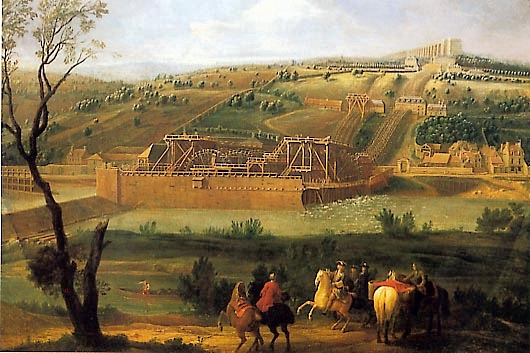 The Marly machine (Source) was built to provide water for the fountains of Versailles. Perhaps Hugo is using it in the sense that we would refer to a Rube Goldberg machine? Our intention here is to consider but one of the innumerable forms in which it is produced before the eyes of an astonished nation. We don’t wish to deal with the administrative folly except in the matter of monuments, and still we can but touch on the immense subject that twenty five folio-size volumes would not exhaust. We only posit, in fact, that there may not be at this hour in France a single city, not a single district capital, not a single township capital where they don’t contemplate, where they don’t begin, where they don’t complete the destruction of some monument of national history, whether by an act of central authority, whether by an act of local authority with the approval of the central authority, whether by an act of individuals before the eyes and with the tolerance of the local authority. We only advance here the profound conviction to make no mistake, and we appeal to the conscience of whoever has made, in whatever place in France, the least excursion of the artist and antiquarian. Every day some old memory of France goes away with the stone on which it was written. Every day we break some letter of the venerable book of tradition. And soon, when the ruin of all these ruins is complete, all that will be left for us is to cry out with the Trojan who at least took with him his gods: Fuit Illium et ingens Gloria! And in support of what we’ve said, may it be permitted to him who writes these lines to cite, from among a mob of documents that he could produce, an extract of a letter addressed to him. He does not personally know the signatory, who is, as the letter announces, a man of taste and heart; but he is thankful for being addressed by him. He will never fault anyone who signals to him an injustice or harmful absurdity to denounce. He only regrets that his voice does not have more authority and resonance. Let this letter be read, and let it be thought in reading it that the deed that it attests is not an isolated deed, but one of a thousand episodes of a great general deed, the successive and incessant demolition of all the monuments of old France. Charleville, 14 February 1832. “Monsieur, In the month of last September, I made a journey to Laon (Aisne), my birth country. I had left it many years ago: so, having just arrived, my first care was to take a stroll around the town… Having arrived at the place du Bourg, as soon as my eyes raised themselves to the old tower of Louis d’Outremer, such was my surprise to see it flanked by ladders, levers, and all possible instruments of destruction. I swear, this sight caused me pain. I tried to guess why these ladders and these pickaxes, when M. Th… passed by, a simple and literate man, plenty of taste for letters and a good friend to all that relates to science and the arts. Right away I related to him the sad impression that the destruction of this old monument was giving me. M. Th…, who shared it, told me that, being left alone among the members of the old municipal council, he was alone in combatting the act of which we were at this moment the witnesses; that these efforts had come to naught. Reasoning, words, all had failed. The new councilors, united in majority against him, had swept him to the side. For having taken a bit forcefully the side of this innocent tower, M. Th… had even been accused of Carlism. These gentlemen had exclaimed to themselves that this tower did nothing but recall feudal times, and its destruction was voted with acclaim. On top of that, the town had offered to the bidder who was charged with the execution a sum of many thousands of Francs, on top of material costs. There is the price of the murder, for it’s a veritable murder! M. Th… pointed out to me on the neighboring wall the poster on yellow paper. On top was written in enormous letters: DESTRUCTION OF THE SAID TOWER OF LOUIS D’OUTREMER. The public is warned, etc.” “This tower occupied a space of a few toises. To enlarge the market which neighbored it, if that’s the goal they were seeking, a certain house could have been sacrificed whose cost would not have surpassed the sum offered to the bidder. They prefered to annihilate the tower. I’m saddened to say this to the shame of the Laonites: their town possesed a rare monument, a monument of the kings of the second dynasty; not one exists anymore today. That of Louis IV was the last. After a similar act of vandalism, we learned in a few days without surpise that they’re demolishing their beautiful cathedral of the 11th century to make a grain exchange.” [Original footnote: We don’t publish the name of the signatory of the letter, not having been authorized by him, but we keep it in reserve for our guarantee. We also thought that we ought to remove the passages which were nothing but an overly benevolent expression of sympathy from our correspondent for us personally.] Thoughts abound and rush before such acts. And first of all, isn’t it an excellent comedy? Imagine these ten or twelve municipal counselors taking into deliberation the great destruction of the said tower of Louis d’Outremer? There they all are, arranged in a circle, and without doubt sitting at a table, legs crossed and slippers on their feet, in Turkish fashion. Listen to them: it’s about enlarging the square for cabbages and for making a feudal monument disappear. There they are who put together all the big words they’ve learned since they were fifteen which they use to announce the Constitutional through the magister of their village. They build on each other. The good reasons rain down. One argues based on feudalism, and grabs hold of another allegation the tithe; another, the corvee. Another, the serfs who beat the water in the ditches to quiet the frogs; a fifth, the right of the first night; a sixth, the eternal priests and the eternal nobles; another, the horrors of St. Bartholomew; another, who is probably a lawyer, the Jesuits, then this, then that; then again that and this; and all has been said: the tower of Louis d’Outremer is condemned. Do you appreciate, in the middle of the grotesque Sanhedrin, the situation of the poor man, sole representative of science, art, taste, history? Do you notice the humble and oppressed attitude of this pariah? Do you hear him hazard a few timid words in favor of the venerable monument? And do you see the tempest erupting against him? There he is, bending under the invectives. There he is who is called from every corner Carlist, and probably Carlisse. What is there to say to this? It’s over. The thing is done. The demolition of the “monument of the ages of barbarism” is definitively voted with enthusiasm, and you hear the hurrahs of the brave municipal counselors of Laon, who were storming the tower of Louis d’Outremer! Do you believe that ever Rabelais, that ever Hogarth, could have found anywhere faces that were more comical, profiles more buffoonish, silhouettes more suited to being drawn on the walls of a cabaret or on the pages of “Battle of Frogs and Mice”? Yes, laugh. But while these good men jabbered, croaked, and deliberated, the old tower, unshakable for so long, shuddered in its foundations. There suddenly, through the windows, through the doors, through the barbicans, through the loopholes, through the skylights, though the gutters, from everywhere, the demolishers come out like the worms from a cadaver. It sweats masons. These lice sting it. These vermin devour it. The poor tower begins to fall stone after stone; its sculptures shatter on the pavement; it splashes the masons with its debris; its side splits open; its profile chips; and the useless bourgeois, who passes nearby, without knowing much of what they’re doing, is astonished by seeing it charged by cords, pulleys, and ladders more than it ever would have been in an assault by the English or the Burgundians. Thus, to tear down this tower of Louis d’Outremer, almost contemporaneous with the Roman towers of old Bibax, to do what hadn’t been done by battering rams, nor ballistas, nor scorpios, nor catapults, nor axes, nor dolabras, nor engines, nor bombards, nor serpentines, nor fauconneaus, nor culverins, nor bullets of iron from the forges of Creil, nor stones for bombardment from the quarries of Peronne, nor the cannon, nor the lightning, nor the tempest, nor the battle, nor the fire of man, nor the fire of heaven, the 19th century sufficed, what wonderful progress! From the feather of a goose that had accidently wandered nearby on a piece of paper by such infintely small creatures! Wicked feather of the municipal council of the 20th order! Feather that shakily forms the imbecile fatwas from the couch of a peasant! The imperceptible feather of the senate of Lilliput! Feather that makes up the faults of the French! Feather that doesn’t know how to spell! Feather which, in one blow, traced more a cross than the signatures at the bottom of the inept order! And the tower was demolished! And it was done! And the town had paid for that! They stole its crown, and they paid the thief! What name do you give such things? And, we repeat, so you think well on it, the deed in Laon is not an isolated deed. At the time of our writing, there’s not a place in France where something similar isn’t happening. It’s more or it’s less, it’s a little or it’s a lot, it’s small or it’s big, but it’s always and everywhere vandalism. The list of demolitions is inexhaustible; it was begun by us and by other writers more important than us. It would be easy to enlarge but it would be impossible to finish. We’ve just seen the prowess of the municipal council. Similarly, it’s a mayor who moves a menhir to mark the limit of a public commons; it’s a bishop who rakes and brushes his cathedral; it’s a prefect who tears down an abbey of the 14th century to unblock the windows of his sitting room; it’s an artillerist who razes a cloister of 1460 to enlarge a firing range; it’s an adjunct who turns the sarcophagus of Theudebert into a pig trough. We could name names. We pity them. We’ll keep them to ourselves. Nevertheless he does not deserve to be spared, this priest of Fecamp who had the jube of his church demolished, giving as a reason that this mass was inconvenient, chiseled and combed by miraculous hands of the fifteenth century, deprived his parishioners of the happiness of contemplating it, that priest, in its splendour at the altar. The mason who had executed the order of the smug man made himself from the debris of the jube an admirable little house that you can see in Fecamp. What shame! What has become of the time when the priest was the supreme architect! Now the mason teaches the priest! Isn’t there also a dragoon or a hussar who wants to turn the church of Brou, that marvel, into his hay cellar, and who ingeniously asked permission from the minister! Weren’t they in the process of scraping from top to bottom the beautiful cathedral of Angers, when lightning struck the steeple, still black and intact, and burned it, as if the lightning had, itself, the intelligence, and had preferred to abolish the old steeple than leave it to be scraped by the municipal counselors! Hadn’t a minister of restoration trimmed in Vincennes its seven towers, and in Toulous its beautiful ramparts? Wasn’t there a prefect in Saint-Omer who destroyed three quarters of the magnificent ruins of Saint-Bertin, under the pretext of making work for the workers? Mockery! If you are such mediocre administators, such sterile brains, that in the presence of roads to pave, canals to dig, streets to macadamize, harbors to muck out, lands to reclaim, schools to build, you couldn’t think of what to do with your workers, at least don’t throw them like a prey our national edifices to demolish, don’t tell them to make themselves bread with these stones; rather split them, these workers, into two teams, who each dig a large hole, and that each covers one with the dirt of the other. And then pay them for this work. There’s an idea. I’d rather the useless than the harmful. In Paris, the vandalism flourishes and prospers before our eyes. The vandalism is architected. The vandalism settles in and lounges. The vandalism is celebrated, applauded, encouraged, admired, caressed, protected, consulted, subsidized, defrayed, naturalized. The vandalism is the one who undertakes works on account of the government. It’s installed itself insidiously in the budget, and it nibbles it quietly, like a rat its cheese. And sure, it earns its money. Every day it demolishes something of the little that is left of that admirable old Paris. What do I know? The vandalism has whitewashed Notre-Dame, the vandalism has retouched the towers of the Palace of Justice, the vandalism has razed Saint-Magloire, the vandalism has destroyed the cloister of the Jacobins, the vandalism has amputated two steeples out of three on Saint-Germain-des Pres. We might in some cases speak of buildings that it has built. The vandalism has its newspapers, its cliques, its schools, its chairs, its public, its reasons. The vandalism has for it the bourgeois. It’s well nourished, well paid, buffed with pride, almost scientist, very classical, good logician, strong theoretician, joyous, powerful, affable if need be, good speaker, and self-satisfied. It plays the patron. It protects the young talents. It is professor. It gives grand prizes of architecture. It sends students to Rome. It is deputy, and it refuses Ingres the frescoes of the chamber, to award them to who knows who. It wears an embroidered garment, sword on the side and French breeches. It is of the institute. It goes to the court. It gives its arm to the king, and walks the streets with him, whispering its plans in his ear. You must have met it. Sometimes it makes itself owner, and changes the magnificent tower of Saint-Jacques-de-la-Boucherie into a factory for lead shot, pitylessly closed to the antiquarian snooper; and it makes of the nave of Saint-Pierre-aux-Boeufs a store for empty barrels, of the Hotel de Sens a stable for driving horses, of the Maison-de-la-Couronne-d’or a textile mill, of the chapel of Cluny a print shop. Sometimes it paints the buildings and demolishes Saint-Landry to build on the location of that simple and beautiful church a big ugly house that doesn’t get rented. Sometimes it makes itself clerk and it covers Saint-Chapelle with papers, this church which will be the most admirable decoration of Paris, once they’ve demolished Notre-Dame. Sometimes it makes itself spectator, and in the dishonored nave of Saint-Benoit it vilely fits a theatre, and what theatre! Shame! The sacred cloister of the Benedictins, learned and serious, metamorphosed into I don’t know what kind of foul literary place! During the Restoration, it’s been taking its ease and playing about in a friendly enough way, we admit. Everyone recalls how the vandalism, which was also the king’s architect, treated the Reims cathedral. A man of honor, of science, and talent, Mr. Vitet, already signaled the act. This cathedral is, as we know, covered from top to bottom with excellent sculptures which overflow from all parts of its profile. During the coronation of Charles X, the vandalism, which is a good courtier, feared that a stone might detach itself by accident from all of these sculptures in the overhang, and fall incongruously on the king at the moment his majesty passed; and without pity, and in big blows of the mallet, and taking long three months, it has pruned the old cathedral! He who is writing this has at his house a curious piece of debris from this execution. Since July, it’s also had another which might serve as the counterpart to that one, that’s the execution of the garden of the Tuileries. We will someday revisit this barbarous upheaval at length. We only mention it here as a reminder. But who hasn’t raised his shoulders in passing before these two little usurped enclosures on a public promenade? The garden of the Tuileries has been bitten by the king, and here are the two morsels that he has kept. All the harmony of a royal and tranquil work is troubled, the symmetry of the parterres is made one-eyed, the ponds cut into the terrace, it’s all the same, they’ve got their two little gardens. What would they say to a maker of vaudevilles who pruned away a verse or two from the chorus of Athalie! The Tuileries, that is our Athalie. They say that vandalism has already condemned our old and irreparable church of Saint-Germain-l’Auxerrois. Vandalism has its own ideas for it. It wants to make a big, big, big street all the way across Paris. A street of one league! What magnificent devastations along the way! Saint-Germain-l’Auxerrois will suffer, the admirable tower of Saint-Jacques-de-la-Boucherie may suffer also. But what does it matter! A street of one league! Do you understand how beautiful it will be! A straight line fom the Louvre to the Barrière du Thrône! From one end of the street, from the Barrière, we’ll contemplate the facade of the Louvre. It’s true that all the merit of the colonade of Perrault is in its proportions and that this merit will be fainter at a distance; but what of it? We’ll have a street of one league! From the other end, from the Louvre, we’ll see the Barrière du Thrône, the two proverbial columns that you know, thin, reedy, and risible like the legs of Potier. Oh, marvellous perspective! We hope that this burlesque project will not be accomplished. If they try to realize it, we hope that there will be a riot of artists. We’ll do our best to push them toward it. The devastators never lack pretexts. During the restoration, they spoiled, they mutilated, they disfigured, they profaned the Catholic buildings of the middle ages with the most devotion anywhere. The congregation had developed the same excresence on the churches as on religion. The sacre-coeur has been made marble, bronze, whitewash and gilded wood. It happens most often in the churches in the form of a little painted chapel, gilded, mysterious, elegiac, plenty of puffy angels, coquette, galant, round and misrepresented, like that of Saint-Sulpice. Not a single cathedral, not a parish in France on which this hasn’t been pushed, be it in the front, or on the side a chapel of this kind. This chapel constitutes a veritable disease for the churches. It is the wart of Saint-Acheul. Since the July revolution, the profanations continue, more disastrous and even more mortal, and with other spectacles. The pretext of devotion has been succeeded by the national, liberal, patriotic, philosophical, Voltairian pretext. We no longer restore, we don’t spoil, we don’t make a monument ugly, we tear it down. And there are good reasons for that. A church, that’s fanaticism; a dungeon, that’s feudalism. We denounce a monument, we massacre a pile of stones, we septembrize the ruins. Our churches have just barely been saved by accepting the roundel. Not a Notre-Dame in France so colossal, so venerable, so magnificent, so impartial, so historic, so calm and so majestic as it may be, that it didn’t have a little tricolor flag on a post. Sometimes we save an admirable church by writing at the top: Town Hall. Nothing is less popular among us than these sublime edifices made by the people and for the people. We hold a grudge against them for all the crimes of past times to which they were witnesses. We’d like to erase the entirety of our history. We devastate, we pulverize, we destroy, we demolish in the national spirit. By dint of being good Frenchmen, we become excellent Welches. Among the rest, one encounters certain people to whom it’s repugnant that there is a bit of banal in the magnificent pathos of July, and who applaud the demolishers for other reasons, learned and important reasons, reasons of the economist and the banker. — What’s the use of these monuments? They say. It costs to maintain them, and that’s that. Raze them to the ground and sell the materials. It’s always a matter of profit. — Speaking purely in terms of economics, the reasoning is wrong. We already established it in the note cited above, these monuments are capital. A great many among them, whose renown attracts rich foreigners to France, bring back to the country more than the interest of the money which they cost. To destroy them is to deprive the country of a revenue. But let’s abandon this arid point of view, and reason higher. Since when do we dare, in full civilization, to question art based on its usefulness? It’s too bad for you if you don’t know what art is for! There’s nothing more to say to you. Go! Demolish! Use! Make gravel with Notre-Dame de Paris. Make sous out of the Column. Others accept and want art, but to hear them speak, the monuments of the middle ages are built in bad taste, are barbaric works, are architectural monsters, that we couldn’t abolish too soon or too carefully. To these there is also nothing to say. That is the end of them. The earth has turned, the world has moved on from them; they are the prejudiced of another century; they are no longer of the generation who see the sun. Because, it would be good if the ears of all the greats got used to hearing it said and re-said, at the same time as the glorious political revolution was accomplished in society, a glorious intellectual revolution was accomplished in art. It’s been twenty-five years since Charles Nodier and Madame de Staël announced it in France; and if it were permitted to cite an obscure name after these famous ones, we would add that it’s been fourteen years that we fight for it. Now it is done. The ridiculous duel of the classicists and the romanticists has arranged it for itself, the whole world finally being of the same opinion. There is no longer any question. Everything that is of the future is for the future. There are still barely a few, in the rear parlors of colleges, in the twilight of academies, some rather old children who toy in their corner with the poetics and the methods of another age; some poets, some architects; these battling with three units, those with five orders; some mixing up plaster according to Vignole, others mixing up verses according to Boileau. That is respectable. Let’s say no more about it. And, in this complete renewal of art and criticism, the cause of architecture of the middle ages, pleaded seriously for the first time in three centuries, has been won at the same time as the good general cause, won by all the reasons of science, won by all the reasons of history, won by all the reasons of art, won by intelligence, by imagination and by the heart. So let’s not go back to the thing that’s been judged and well-judged; and let us say loudly to the government, to the towns, to the individuals who are responsible for all the national monuments that luck has placed in their hands. We have to tell of the past to the future. Posteri, posteri, vestra res agitur. As for the buildings that have been built for us for those that have been destroyed, we don’t take the trade; we don’t want them. They’re bad. The author of this note maintains all he has said elsewhere [Original footonte: Notre Dame de Paris] on the modern monuments of current Paris. There is nothing nicer to say of the monuments under construction. What do we care about the three or four little cubic churches that you pitifully build here and there? So let your ruin of the quai d’Orsay crumble with its heavy arches and its villainous columns! Let crumble your palace of the chamber of deputies, who never asked for a better one! Isn’t it an insult in the name of the Ecole des beaux-arts that this mongrel and tiresome construction whose elevation has so long dirtied the side wall of the neighboring house, spreading shamelessly its nudity and its ugliness next to the admirable facade of the chateau de Gaillon? Have we fallen to such a level of wretchedness that we must absolutely admire the gates of Paris? Is there anything in the world more hunchbacked and rickety than your expiatory monument (certainly, that is what it expiates) of the street of Richilieu? Isn’t it a great thing, in truth, that your Madeleine, this sequel to the Bourse, with its heavy tympanum that overwhelms its skinny colonnade? Oh! Who will save me from the colonnades! Please, make better use of our millions. Don’t even use them to perfect the Louvre. You wanted to finish enclosing what you call the parallelogram of the Louvre. But we warn you that this parallelogram is a trapezoid; and for a trapezoid, it’s too much money. Besides, the Louvre, other than what is of the renaissance, the Louvre, you see, isn’t beautiful. We should not admire and continue, as if it were by divine right, all the monuments of the 17th century, though they are worth more than those of the 18th, and above all more than those of the 19th. Whatever their good air, whatever their great face, all of Louis XIV’s monuments are like his children. They’re all a lot of bastards. The Louvre, whose windows cut into the architrave, the Louvre is among them. If it’s true, as we believe, that architecture, alone among all the arts, has no more future, use your millions to conserve, to maintain, to eternalize the national and historic monuments that belong to the state, and reacquire those which belong to individuals. The ransom will be modest. You’ll get them at a good price. Such an ignorant owner will sell the Parthenon for the cost of the rock. Have these beautiful and grave buildings repaired. Have them repaired with care, with intelligence, with sobriety. You have around you men of science and taste who will enlighten you in this work. Most important is that the architect-restorer be frugal with his own imagination; that he study the character of each building with curiosity, according to each century and each climate. That he be penetrated by the general line and the particular line of the monument that is put in his hands; and that he know to skillfully weld his genius to the genius of the ancient architect. You keep the towns in guardianship, prohibit them from demolishing. As for the individuals, as for the owners who would like to stubbornly demolish, let the law forbid them; let their property be estimated, paid, and adjudged to the state. That we may be permitted to transcribe here what we already said on this subject in our first Note on the destruction of the monuments: “The hammer that mutilates the face of the country must be stopped. One law would suffice. Let it be made. Whatever the property rights may be, the destruction of a historic and monumental building should not be permitted to these ignoble speculators whose interest blinds their honor; wretched men, and such imbeciles that they don’t even understand that they’re barbarians! There are two things in a building: its use and its beauty. Its use belongs to the owner, its beauty to the whole world, to you, to me, to us all. Thus, destroying it is exceeding one’s rights.” This is a question of general interest, of national interest. Every day, when the general interest raises its voice, the law quiets the yelping of the private interest. Individual property has often been and is still at every moment modified in the judgement of the social community. We forcibly buy from you your field to make it into a square, your house to make it into a poorhouse. We will buy from you your monument. If there needs to be a law, we repeat, let it be made. Here, we hear the objections rising from everywhere: -Do the chambers have the time? -A law for such a minor thing! For such a minor thing! How! We have forty-four thousand laws that we don’t know what to do with, forty-four thousand laws among which there are barely ten good ones. All the years, the chambers are heated, they ponder them in hundreds, and, in hatching, only two or three of them are born viable. Laws are made on everything, for everything, against everything, about everything. To transport boxes from this ministry on one side of the rue de Grenelle to the other, they make a law. And a law for the monuments, a law for art, a law for the nationality of France, a law for the memories, a law for the cathedrals, a law for the greatest products of human intelligence, a law for the collective work of our fathers, a law for history, a law for the unrepairable that we destroy, a law so that the nation has the most sacred things in the future, a law for the past, this just, good, excellent, sacred, useful, necessary, indispensable, urgent law, they don’t have time, they won’t make it! Risible, risible, risible! |

